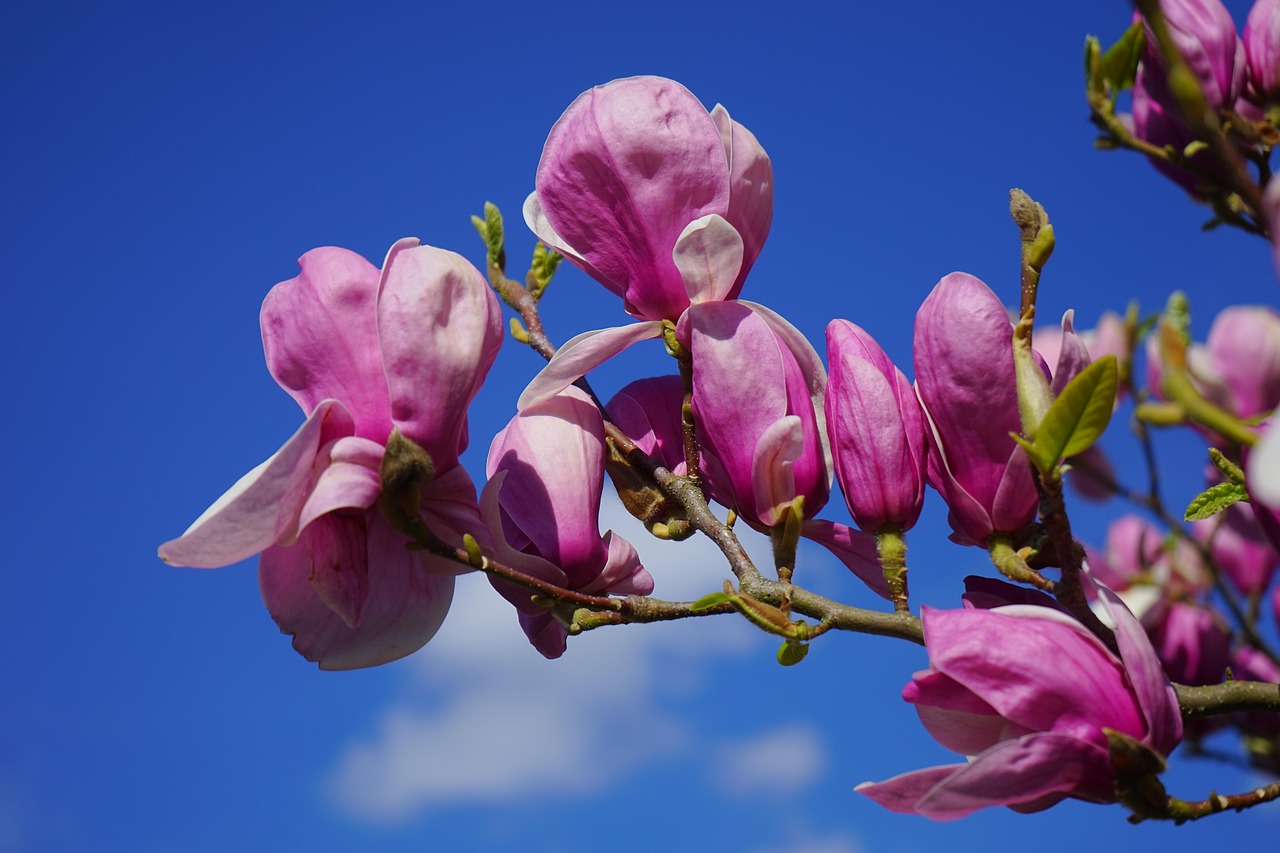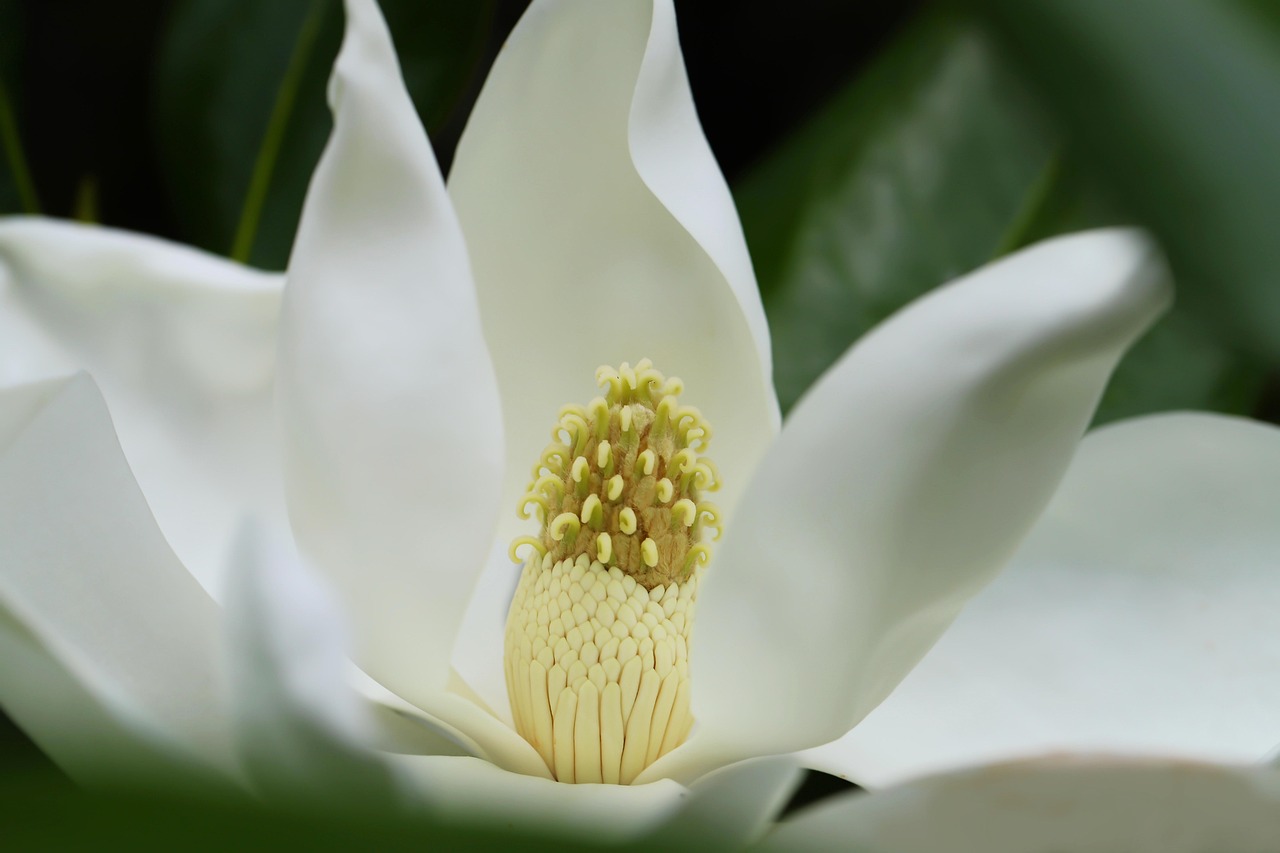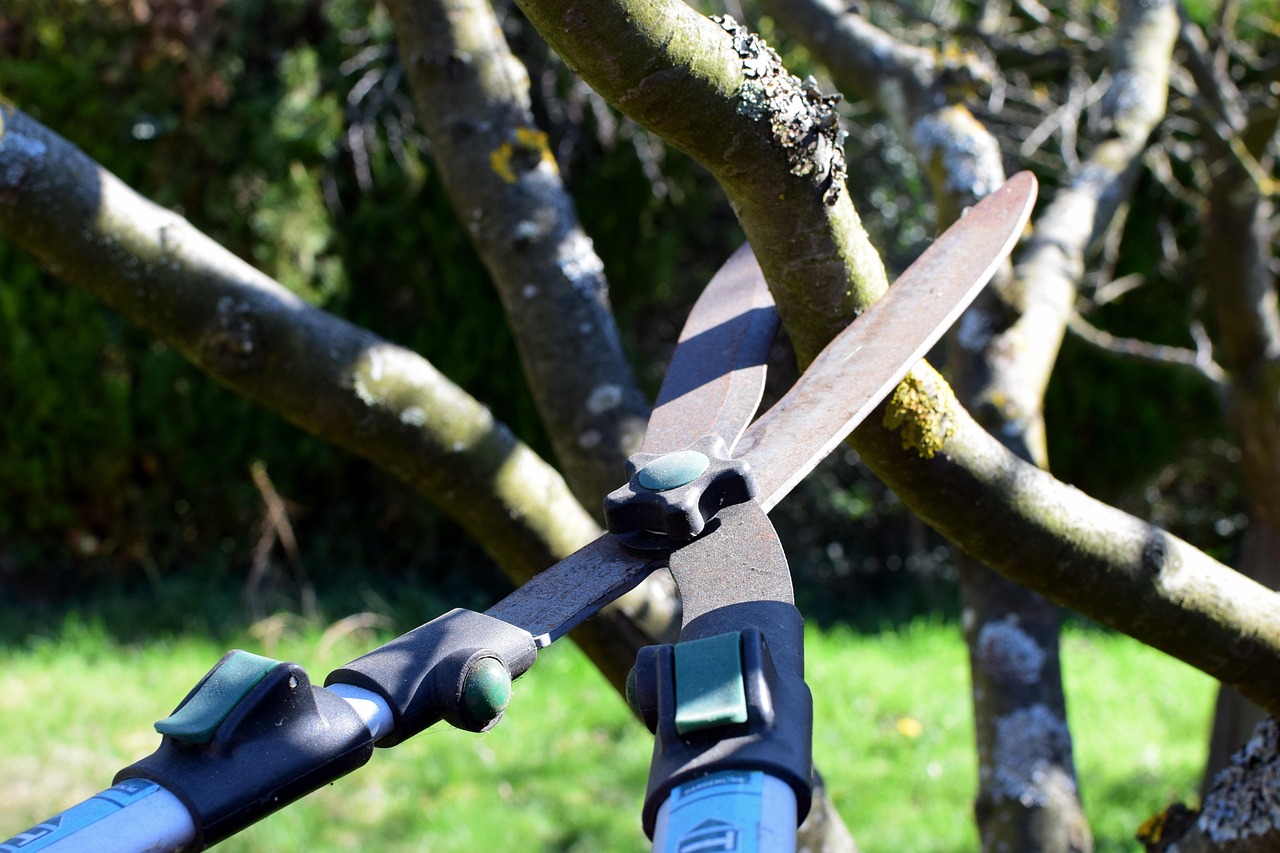Proper pruning of magnolia trees in urban plazas and squares enhances their health and aesthetics. Regular pruning improves air circulation, encourages new growth, and maintains the tree’s shape, making them more visually appealing in public spaces.
Magnolia trees are a popular choice for urban plazas and squares due to their stunning blossoms and lush foliage. These trees can create a vibrant atmosphere, attracting visitors and providing shade. However, maintaining their beauty requires regular care and attention, especially through the practice of pruning. Effective pruning not only promotes healthy growth but also ensures that the trees remain safe and do not obstruct walkways or structures.

Understanding the unique characteristics of magnolia trees is essential for effective pruning. These trees can vary significantly in size and form, depending on the species. Some magnolias grow tall, while others remain smaller and bushier. Regardless of type, all magnolias benefit from thoughtful pruning techniques.
Types of Magnolia Trees
Magnolia trees belong to a large family with many species. Each type has distinct features that make them suitable for different urban environments. Below is a table outlining some common types of magnolia trees used in urban landscapes:
| Type | Height | Features | Best Locations |
|---|---|---|---|
| Southern Magnolia | 60-80 feet | Large, fragrant white flowers; evergreen leaves | Large plazas; parks |
| Star Magnolia | 15-20 feet | Small, star-shaped white flowers; early bloom | Small squares; residential areas |
| Cucumber Tree | 60-80 feet | Yellow-green flowers; cucumber-like fruit | Open spaces; wide boulevards |
| Saucer Magnolia | 20-30 feet | Pink to purple large flowers; deciduous | Garden settings; urban parks |
When planning for magnolia tree pruning in urban areas, consider the specific needs of each species. Factors such as growth habit, flowering time, and space availability play significant roles in determining the best pruning approach. Understanding these aspects helps in making informed decisions for both aesthetic and practical purposes.

The Importance of Pruning Magnolias
Pruning magnolia trees serves several purposes. Regular maintenance enhances the overall health of the tree. It removes dead or diseased branches, which can be a breeding ground for pests and diseases. Furthermore, healthy trees are more resilient against environmental stresses such as drought or pollution.
Another crucial aspect of pruning is shaping the tree. Well-shaped magnolias not only look better but also have improved structural integrity. Pruning encourages a balanced canopy that allows adequate sunlight to penetrate through the foliage, promoting photosynthesis and vigorous growth.
Safety is also a significant consideration when it comes to pruning. In urban settings, overgrown branches can obstruct pathways or interfere with buildings and streetlights. Regular pruning helps mitigate these risks, ensuring that magnolia trees enhance the space without becoming hazards.

When to Prune Magnolias
The timing of pruning plays an essential role in achieving desirable results. For most magnolia species, the best time to prune is late winter to early spring before new growth begins. This timing minimizes stress on the tree and ensures that it can recover quickly as the growing season starts.
However, specific species may have different requirements. For instance, star magnolias can be pruned immediately after flowering to maintain their shape without sacrificing next year’s blooms. Understanding the flowering habits of each type is crucial for effective pruning.
Pruning Techniques
Employing proper pruning techniques is vital for the health of magnolia trees. Some key techniques include:

- Thinning: Remove select branches to improve air circulation and light penetration.
- Heading back: Cut back branches to encourage bushier growth and maintain size.
- Cleaning: Remove dead or diseased wood to promote overall tree health.
- Shaping: Trim branches to achieve a desirable form without over-pruning.
Each technique requires careful consideration of how much to remove and where to cut. Using sharp tools helps make clean cuts, reducing damage to the tree. Always remember to step back periodically to assess the overall shape as you work.
In conclusion, understanding how to prune magnolia trees effectively in urban plazas and squares is crucial for maintaining their beauty and health. Proper timing, techniques, and knowledge about different species will ensure that these magnificent trees continue to thrive and enhance public spaces.
Essential Tools for Pruning Magnolias
To effectively prune magnolia trees, having the right tools is essential. The tools you choose can make a significant difference in the quality of your work and the health of the tree. Here are some commonly used tools for pruning magnolias:
- Bypass Pruners: Ideal for cutting small branches up to ¾ inch thick. They provide a clean cut, which helps prevent damage to the plant.
- Loppers: Useful for thicker branches, loppers can cut branches up to 2 inches in diameter. They have long handles for added leverage.
- Hand Saws: For branches that are too thick for pruners or loppers, a hand saw can effectively cut through larger limbs.
- Chainsaws: In cases where large branches need to be removed, a chainsaw can be an efficient tool. However, it requires careful handling.
- Protective Gear: Always wear gloves, safety glasses, and sturdy footwear to protect yourself while pruning.
Maintaining your tools is equally important. Ensure that all cutting tools are sharp and clean to make precise cuts. This will help reduce stress on the tree and minimize the risk of disease transmission.
Pruning Techniques in Detail
Each pruning technique serves a specific purpose and requires different approaches. Understanding these techniques in detail can help you achieve better results:
Thinning
Thinning involves selectively removing branches to improve light exposure and air circulation. This technique can help prevent overcrowding and encourages healthy growth.
- Selective Cutting: Identify branches that cross over others or those that are damaged. Remove them carefully to enhance the tree’s shape.
- Aim for Balance: Maintain an even distribution of branches around the tree to ensure a balanced canopy.
Heading Back
This technique involves cutting back branches to reduce their length. It encourages new growth from the remaining buds.
- Choose Buds Wisely: Cut just above a healthy bud to encourage growth in the desired direction.
- Avoid Over-Pruning: Limit this technique to prevent excessive stress on the tree, which can lead to reduced flowering.
Cleaning
Cleaning involves removing dead, diseased, or damaged wood from the tree. This practice is vital for maintaining the health of magnolias.
- Look for Signs of Disease: Inspect branches for discoloration or fungus. Remove any affected areas immediately.
- Ensure Clean Cuts: Use sharp tools to make clean cuts, which helps the tree heal faster.
Shaping
Shaping focuses on maintaining the desired form of the magnolia tree. It is particularly important for trees in urban settings where aesthetics matter.
- Assess Overall Shape: Step back frequently while shaping to ensure a uniform appearance.
- Consider Future Growth: Anticipate how the tree will grow over time, and shape accordingly to prevent future issues.
The Role of Timing in Pruning
As previously mentioned, timing is critical for successful pruning. Each season offers unique advantages and challenges. Here’s a breakdown of when to prune and what to consider:
Winter Pruning
Winter is generally considered the best time for pruning magnolias. During this dormant period, trees are less stressed, making it easier for them to recover from cuts.
- Reduced Stress: Trees expend less energy during winter, allowing them to focus on healing once spring arrives.
- Visibility of Structure: Without leaves, it’s easier to see the branch structure and identify which ones need trimming.
Spring Pruning
If necessary, light pruning can occur in early spring just after flowering. This helps maintain shape without sacrificing upcoming blooms.
- Avoid Heavy Cuts: Heavy pruning in spring can lead to excessive sap loss and may affect flowering.
- Focus on Cleanup: Remove any dead or diseased wood that has become apparent after blooming.
Fall Pruning
Avoid pruning during fall. This timing can stress trees as they prepare for winter dormancy.
- Pest Infestation Risk: Wounds from cuts can attract pests looking for winter shelter.
- Disease Spread: Fall is often wet, creating an environment conducive to diseases that can spread through fresh cuts.
The Impact of Urban Environment on Magnolia Trees
The urban environment presents unique challenges and opportunities for magnolia trees. Factors such as soil quality, pollution, and available space influence how these trees thrive.
- Soil Quality: Urban soils may be compacted or low in nutrients. Regular soil testing can help determine if amendments are needed.
- Pests and Diseases: Higher levels of pollution can stress trees, making them more susceptible to pests and diseases. Regular monitoring is essential.
- Space Constraints: In plazas and squares, space limitations may require more frequent pruning to maintain safety and aesthetics.
Caring for magnolia trees in urban environments requires an understanding of their unique needs and challenges. By applying effective pruning techniques and considering environmental factors, urban planners and landscapers can ensure these magnificent trees continue to thrive in public spaces.
Common Pests and Diseases Affecting Magnolia Trees
Magnolia trees, while beautiful, are not immune to pests and diseases. In urban areas, these threats can be exacerbated by environmental stressors. Understanding the common pests and diseases that affect magnolias is essential for effective management and pruning practices.
Pests
Several pests can harm magnolia trees. Recognizing their presence early can help in taking appropriate action. Below is a list of common pests that may infest magnolias:
- Scale Insects: These tiny insects attach themselves to branches and leaves, sucking sap and weakening the tree. Look for sticky residue or black sooty mold as indicators.
- Magnolia Caterpillars: The larvae of certain moths feed on leaves, causing significant damage. Their presence is often noticeable by the chewed edges of leaves.
- Aphids: These small, soft-bodied insects also suck sap from the tree. They can lead to leaf curling and yellowing.
- Spider Mites: These pests thrive in dry conditions and can cause stippling on leaves. They are often found on the undersides of leaves.
To manage pest issues, regular monitoring is vital. Early detection allows for timely intervention, which can include natural predators, insecticidal soaps, or other organic pest control methods.
Diseases
Magnolia trees are susceptible to various diseases, many of which can lead to significant health issues if not addressed promptly. Common diseases affecting magnolias include:
- Powdery Mildew: This fungal disease appears as a white, powdery coating on leaves. It thrives in humid conditions and can weaken the tree over time.
- Anthracnose: This fungal infection causes dark spots on leaves and can lead to premature leaf drop. It usually occurs during wet weather.
- Cankers: These are dead sections of bark that can disrupt the flow of nutrients and water in the tree. They often appear as sunken areas on branches.
- Root Rot: Caused by overwatering or poorly drained soils, root rot can severely affect magnolia trees. Symptoms include yellowing leaves and wilting.
To minimize the risk of diseases, ensure proper watering practices and improve air circulation around the tree. Pruning away affected branches and maintaining overall tree health can also help prevent disease spread.
Best Practices for Urban Magnolia Maintenance
Caring for magnolia trees in urban settings requires specific practices tailored to their environment. Implementing best practices can enhance their longevity and appearance.
Soil Management
The quality of soil directly impacts the health of magnolia trees. Here are some best practices for soil management:
- Regular Soil Testing: Conduct tests to determine nutrient levels and pH balance. This information helps in making necessary amendments.
- Add Organic Matter: Incorporate compost or well-rotted manure into the soil to improve its structure and nutrient content.
- Avoid Compaction: Limit foot traffic around the root zone to prevent soil compaction, which can hinder root growth.
Watering Techniques
Proper watering is crucial for magnolia trees, especially in urban environments where soil can dry out quickly. Consider these watering techniques:
- Deep Watering: Water deeply but infrequently to encourage deep root growth. This helps the tree withstand drought conditions.
- Avoid Overhead Watering: Apply water directly to the soil rather than wetting the foliage to reduce disease risk.
- Mulching: Use organic mulch around the base of the tree to conserve moisture and regulate soil temperature.
The Role of Pruning in Tree Health
Pruning is not just about aesthetics; it plays a crucial role in the overall health of magnolia trees. Proper pruning techniques contribute significantly to their vitality.
Encouraging Growth
Strategic pruning encourages healthy growth patterns by:
- Removing Competing Branches: Pruning away branches that compete for sunlight allows other limbs to flourish.
- Stimulating New Growth: Cutting back older branches can stimulate new shoot growth, leading to a fuller canopy.
Pest and Disease Management
Regular pruning helps minimize pest and disease issues by:
- Improving Air Circulation: Thinning out branches promotes better airflow, reducing humidity levels that foster fungal diseases.
- Easier Monitoring: A well-pruned tree allows for easier inspection and quicker identification of any emerging problems.
The Aesthetic Value of Pruned Magnolias
Aesthetics play an important role in urban landscaping. Properly pruned magnolia trees not only enhance visual appeal but also create inviting spaces for the community.
- Cohesive Design: Well-maintained trees complement other landscaping elements, contributing to a cohesive urban design.
- Cultural Significance: Magnolias often hold cultural importance and can be symbols of beauty and resilience in urban landscapes.
In urban plazas and squares, magnolia trees serve as focal points that draw people together. Their stunning blooms and lush foliage create an environment that invites relaxation and enjoyment, making them a valuable addition to any public space.
Environmental Considerations in Urban Magnolia Care
Urban environments pose unique challenges for magnolia trees, but understanding these factors can significantly enhance their care. Effective management practices are essential for ensuring that these trees thrive amidst the urban landscape.
Pollution and Its Effects
Air pollution is a common concern in urban areas and can adversely affect the health of magnolia trees. Pollutants such as nitrogen dioxide and sulfur dioxide can lead to leaf burn and reduced photosynthesis. Here are some strategies to mitigate these effects:
- Regular Monitoring: Keep an eye on leaf health. Discolored or scorched leaves may indicate pollution stress.
- Use of Barriers: Planting barriers, such as shrubs or other trees, can help filter air pollutants before they reach magnolias.
- Soil Health: Maintaining healthy soil can improve the overall resilience of magnolias against pollution-related stressors.
Urban Heat Islands
Urban heat islands can create microclimates that increase temperatures in city areas. Higher temperatures can stress magnolia trees, leading to dehydration and increased susceptibility to pests. Mitigation strategies include:
- Strategic Planting: Positioning magnolias near water features or shaded areas can help reduce heat stress.
- Watering Practices: Implementing efficient irrigation systems ensures that trees receive adequate moisture during hot spells.
- Mulching: Applying mulch around the base of magnolias can help retain soil moisture and regulate temperature.
Community Engagement and Education
Engaging the community in the care of magnolia trees fosters a sense of ownership and appreciation for urban greenery. Educational programs can raise awareness about the benefits of these trees and the importance of proper care.
Workshops and Events
Organizing community workshops focused on tree care, including pruning techniques, pest management, and general maintenance, can empower residents. Consider the following ideas:
- Pruning Demonstrations: Show community members how to properly prune magnolias and other urban trees.
- Pest Identification Sessions: Help participants learn to identify common pests and diseases affecting magnolias.
- Tree Planting Events: Encourage community involvement by organizing tree planting days where residents can plant new magnolias in local parks or plazas.
Information Dissemination
Providing easy access to information about magnolia care can help ensure their longevity. Consider creating brochures or online resources covering:
- Caring for Magnolias: Tips on watering, pruning, and general maintenance.
- Pest and Disease Management: Identifying common threats and how to address them.
- The Benefits of Urban Trees: Highlight the ecological, aesthetic, and social benefits of maintaining healthy magnolias in urban settings.
The Future of Magnolia Trees in Urban Landscapes
The future of magnolia trees in urban plazas and squares relies on sustainable practices and community involvement. As cities continue to grow, integrating green spaces becomes crucial for enhancing urban living conditions.
Continued research into tree species best suited for urban environments is necessary. Emphasizing diversity in urban forestry can enhance resilience against pests and diseases. Additionally, innovative landscaping designs that incorporate magnolias can lead to more functional and aesthetically pleasing public spaces.
Technological advancements, such as smart irrigation systems and soil sensors, can also play a vital role in monitoring tree health and optimizing care practices. Implementing these technologies will enhance the management of urban greenspaces, ensuring that magnolias thrive for generations to come.
Conclusion
Magnolia tree pruning in urban plazas and squares is a critical practice that contributes not only to the health and longevity of these magnificent trees but also to the aesthetic value of public spaces. Understanding the unique challenges faced by magnolias in urban environments allows for targeted care strategies that enhance their growth potential.
The combination of proper pruning techniques, pest management, soil health maintenance, and community engagement creates a robust framework for sustaining magnolia trees in urban settings. As cities evolve, prioritizing green spaces like those featuring magnolia trees fosters healthier ecosystems and enriches the lives of residents.
Ultimately, by investing time and resources into the care of magnolia trees, we not only ensure their survival but also contribute to creating beautiful, inviting urban landscapes that benefit everyone. The effort put into maintaining these stunning trees pays off in countless ways, from improved air quality to enhanced community well-being.
